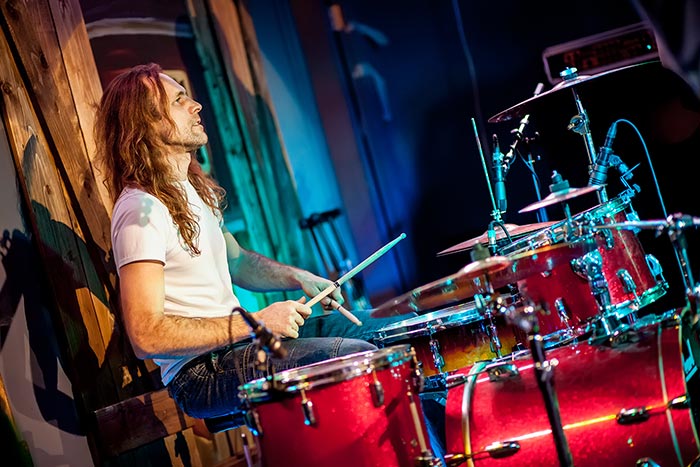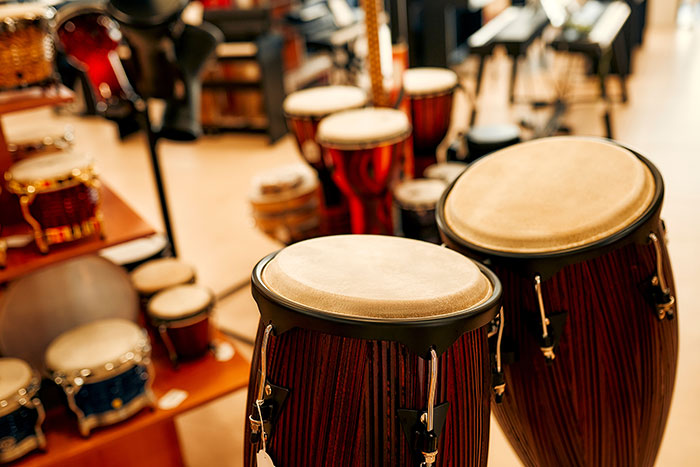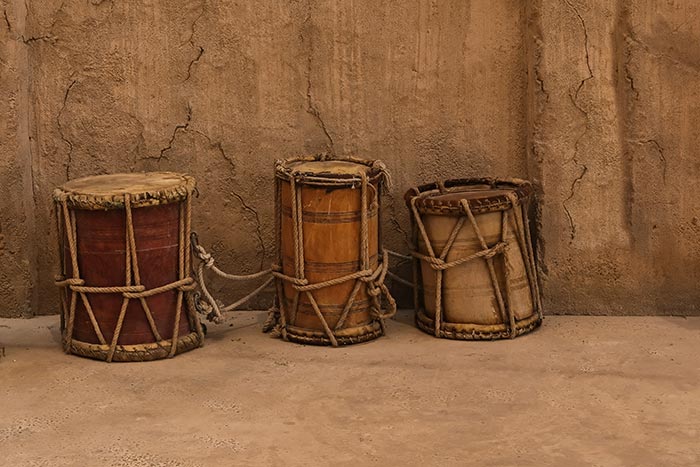Jazz music is characterised by its rhythmic complexity, syncopation, and improvisational flair. At the core of this vibrant musical form are the drummers who provide the pulsating heartbeat of every jazz ensemble. The history of jazz drumming is rich and varied, marked by legendary figures who have each contributed to its evolution in profound ways.
This article explores the pioneers of the bebop and beyond era, modern innovators, and the lasting legacy and influence of legendary jazz drummers.
The Pioneers

Baby Dodds
Warren “Baby” Dodds, born on December 24, 1898, in New Orleans, Louisiana, was a pioneering jazz drummer who significantly shaped the New Orleans jazz style. His innovative use of the drum kit, emphasising the bass drum, snare, and cymbals, set the foundation for modern jazz drumming techniques.
Best known for his work with Louis Armstrong’s Hot Five and Hot Seven recordings, including classics like “West End Blues” and “Hotter Than That,” Dodds’ contributions were both technical and deeply musical.
He also performed with jazz legends like King Oliver, Jelly Roll Morton, and his clarinettist brother, Johnny Dodds, leaving a lasting influence on the world of jazz.
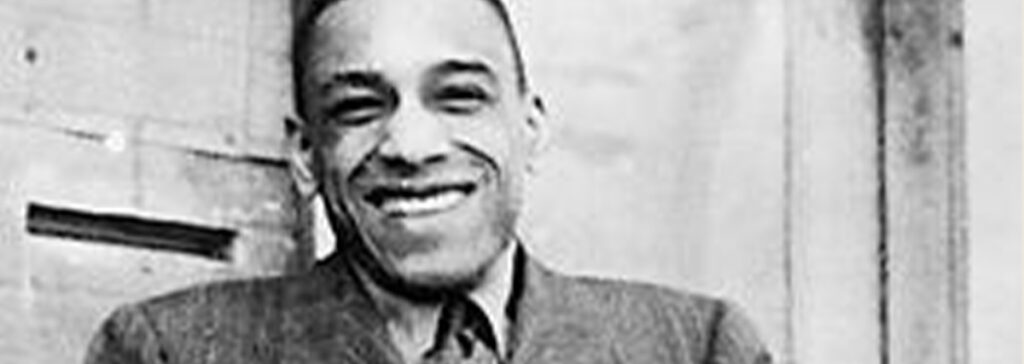
Chick Webb
Chick Webb, born William Henry Webb on February 10, 1905, in Baltimore, Maryland, was a giant in the world of jazz drumming despite his small stature and physical limitations due to tuberculosis of the spine.
Leading his own big band, Webb became one of the most influential drummers of the swing era, renowned for his powerful drumming and impeccable sense of timing, earning him the title “King of the Drums.” His work with Ella Fitzgerald, particularly on hits like “A-Tisket, A-Tasket,” remains legendary, showcasing his ability to drive an orchestra with precision and flair.
Webb’s innovative techniques and dynamic performances left an indelible mark on the jazz world, inspiring countless drummers who followed.

Gene Krupa
Gene Krupa, born on January 15, 1909, in Chicago, Illinois, revolutionised jazz performance by bringing the drum set to the forefront.
As a member of the Benny Goodman Orchestra, Krupa’s energetic and visually dynamic playing made him a star, particularly noted for his iconic drum solo in the hit “Sing, Sing, Sing,” which captivated audiences and set a new standard for drummers.
Beyond his work with Goodman, Krupa led his own successful band featuring talents like Anita O’Day and Roy Eldridge.
His innovative techniques, such as the use of rim shots and the development of the drum kit as a solo instrument, along with his showmanship and technical prowess, not only made him a household name but also paved the way for future generations of jazz drummers, influencing the development of modern drumming techniques and performance styles.
Bebop and Beyond

Max Roach
Max Roach was a pioneering figure in the bebop movement, known for his collaborations with jazz legends like Charlie Parker, Dizzy Gillespie, and Thelonious Monk.
Born on January 10, 1924, in Newland, North Carolina, Roach’s drumming was characterised by its complexity and creativity, incorporating polyrhythms, intricate phrasing, and seamless improvisation.
Beyond his technical prowess, Roach was a strong advocate for civil rights, using his music to address social issues and inspire change.
His influential works, such as the album “We Insist! Freedom Now Suite,” combined art with activism, making him not only a musical innovator but also a powerful voice for social justice.

Art Blakey
Art Blakey, born on October 11, 1919, in Pittsburgh, Pennsylvania, became a hallmark of hard bop with his powerful, driving drumming style.
As the leader of the Jazz Messengers, Blakey nurtured the careers of countless young musicians, including Wayne Shorter, Lee Morgan, and Wynton Marsalis, helping to shape the future of jazz.
His dynamic drumming, characterised by explosive solos and deep grooves, along with his infectious enthusiasm, made him a central figure in the jazz world. Blakey’s ability to ignite the energy of any ensemble he played with, coupled with his commitment to mentoring the next generation of jazz artists, cemented his legacy as a legendary drummer and bandleader.
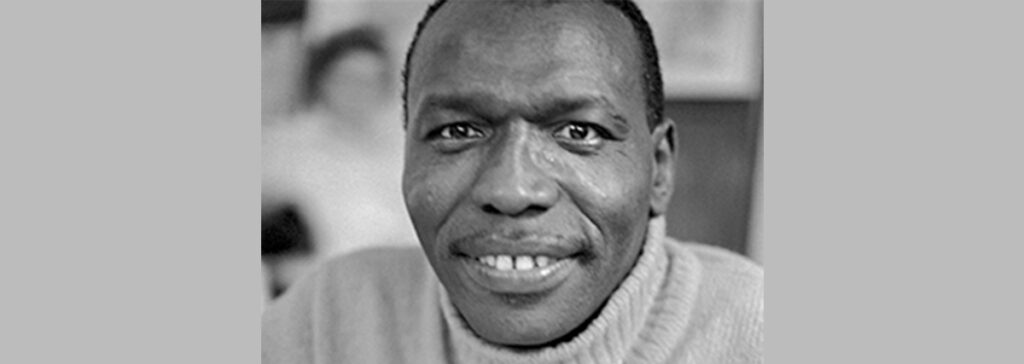
Elvin Jones
Elvin Jones, born on September 9, 1927, in Pontiac, Michigan, redefined jazz drumming with his groundbreaking work in the John Coltrane Quartet.
Known for his innovative use of polyrhythms and his ability to create a swirling, propulsive groove, Jones’s drumming was both powerful and highly nuanced.
His contributions to iconic albums like “A Love Supreme” and “Live at Birdland” showcased his exceptional skill and creative vision.
Jones’s ability to seamlessly blend complex rhythms with a deep sense of swing made him one of the most influential drummers in jazz history, leaving an indelible mark on the genre and inspiring countless musicians.

Philly Joe Jones
Philly Joe Jones, born on July 15, 1923, in Philadelphia, Pennsylvania, was a pivotal figure in the world of jazz drumming, especially recognised for his work with Miles Davis’s first great quintet.
Renowned for his sharp technique, intricate rhythms, and dynamic solos, Jones’s drumming provided both a solid foundation and a layer of creative improvisation.
His exceptional contributions can be heard on landmark albums such as ‘Round About Midnight and Milestones, where his playing complemented the group’s innovations while adding his own rhythmic flair.
Philly Joe Jones had the rare ability to balance finesse with power, making him a favourite among fellow musicians and jazz enthusiasts.
His influence endures to this day, inspiring drummers across jazz and beyond with his masterful technique and versatility.

Billy Higgins
Billy Higgins, born October 11, 1936, in Los Angeles, California, was one of the most recorded jazz drummers in history, celebrated for his warm tone and impeccable sense of swing.
Higgins’s drumming is featured on countless classic jazz recordings, including works by Ornette Coleman, Thelonious Monk, and Lee Morgan.
Notable tracks featuring his drumming include Ornette Coleman’s groundbreaking The Shape of Jazz to Come and Lee Morgan’s timeless hit The Sidewinder.
Higgins was known for his ability to blend seamlessly into any ensemble, while still maintaining a distinctive voice on the drums. His subtle, yet powerful playing style became a hallmark of the hard bop and free jazz movements.
With a career spanning over four decades, Billy Higgins left an indelible mark on the jazz world, influencing generations of musicians and listeners alike. His drumming continues to be celebrated for its versatility, warmth, and understated brilliance.
Modern Innovators

Tony Williams
Tony Williams, born on December 12, 1945, in Chicago, Illinois, was a prodigious talent who joined the Miles Davis Quintet at just 17 years old, revolutionising jazz drumming.
His work with Davis, particularly on groundbreaking albums like “E.S.P.” and “Nefertiti,” showcased his remarkable technical skill and forward-thinking approach.
Williams was known for his ability to blend complex rhythms with a unique sense of musicality, pushing the boundaries of jazz. He continued to innovate with his own projects, such as his fusion band Lifetime, where he blended jazz with rock and other genres, influencing countless musicians and shaping the future of modern jazz.

Jack DeJohnette
Jack DeJohnette, born on August 9, 1942, in Chicago, Illinois, is renowned for his versatility and creativity, making him one of the most respected drummers in modern jazz.
His career spans collaborations with a wide range of artists, from Miles Davis and Keith Jarrett to John Coltrane and Herbie Hancock.
DeJohnette’s unique blend of sensitivity and power, coupled with his ability to seamlessly navigate different styles and genres, has kept him at the forefront of jazz innovation.
His work with the Keith Jarrett Trio and his own projects highlight his exceptional ability to blend improvisation with structured compositions, solidifying his legacy as a pivotal figure in contemporary jazz.
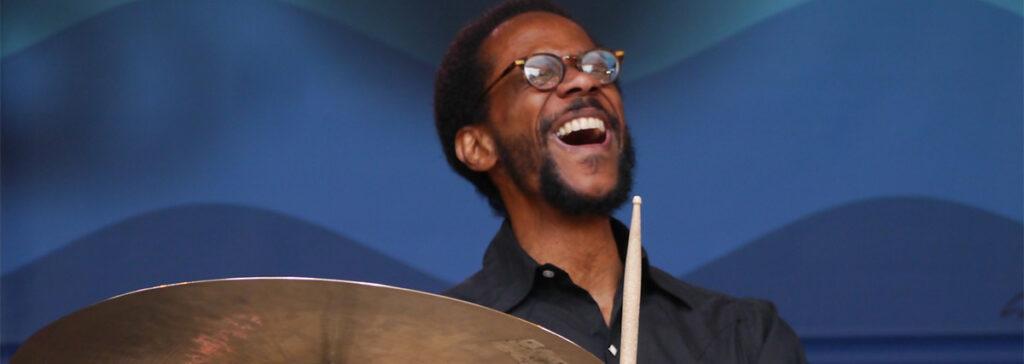
Brian Blade
Brian Blade, born on July 25, 1970, in Shreveport, Louisiana, is celebrated for his expressive, dynamic drumming and his profound musicality.
As a member of the Wayne Shorter Quartet and the leader of his own Fellowship Band, Blade has demonstrated an extraordinary ability to create a deep connection with the music.
His drumming is characterised by its fluidity, responsiveness, and emotional depth, making him a standout figure in contemporary jazz.
Blade’s contributions to albums like “Footprints Live!” with Wayne Shorter and his own “Brian Blade Fellowship” showcase his innovative approach, blending traditional jazz elements with modern sensibilities to create a unique and compelling sound.
Their Legacy and Influence
The legacy of these legendary jazz drummers extends far beyond their individual contributions. They have influenced countless musicians across genres, shaping the evolution of drumming and jazz music as a whole.
Their innovative techniques, creative approaches, and groundbreaking performances have left an indelible mark on the world of music.
Jazz drumming continues to evolve, with new generations of drummers building on the foundations laid by these legends.
The spirit of innovation and improvisation that defines jazz ensures that the legacy of these drumming pioneers will endure, inspiring future musicians to explore new possibilities and push the boundaries of their art.
In celebrating these legendary jazz drummers, we honour the rich history and vibrant future of jazz music. Their contributions remind us of the power of rhythm and the essential role of the drummer in creating the magic of jazz.


